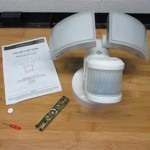Sodium Vapor Outdoor Lights Vs LED: Essential Aspects
Outdoor lighting plays a crucial role in enhancing safety, security, and aesthetics. When it comes to choosing the right light source, two primary options emerge: sodium vapor lights and LED lights. Both technologies have their strengths and weaknesses, but which one is the better choice for your needs? This article delves into the essential aspects of sodium vapor vs LED outdoor lights to help you make an informed decision.
1. Energy Efficiency
Energy efficiency is a key consideration when selecting outdoor lights. LED lights far surpass sodium vapor lights in this regard. LEDs consume significantly less energy, typically around 75-80% less than sodium vapor lights. This translates into substantial savings on your energy bills over time, making LEDs the more economical option.
2. Light Output and Color Quality
Light output and color quality are crucial factors for effective outdoor lighting. Sodium vapor lights emit a distinctive yellowish-orange light, which can be advantageous for certain applications such as street lighting. However, LEDs offer a broader range of light colors, including warm white, cool white, and neutral white, allowing for greater customization and better color rendering.
3. Lifespan and Maintenance
Lifespan and maintenance are critical aspects that impact the long-term performance and cost of ownership. LED lights have a significantly longer lifespan than sodium vapor lights, typically lasting 50,000 to 100,000 hours compared to 24,000 to 36,000 hours for sodium vapor lights. The longer lifespan of LEDs reduces the need for frequent replacements and maintenance, saving you time and money.
4. Environmental Considerations
Environmental sustainability has become a growing concern. LED lights are considered more environmentally friendly than sodium vapor lights. LEDs contain no mercury, unlike sodium vapor lights, which pose environmental hazards when disposed of improperly. Additionally, LEDs consume less energy, reducing greenhouse gas emissions and contributing to sustainable practices.
5. Cost Comparison
Cost is an important factor to consider when choosing outdoor lights. While sodium vapor lights have a lower upfront cost, LEDs offer a better return on investment over time. The lower energy consumption and longer lifespan of LEDs compensate for the initial higher purchase price, resulting in significant savings on energy bills and maintenance costs.
6. Applications and Aesthetics
The choice between sodium vapor and LED outdoor lights depends on the specific application and desired aesthetics. Sodium vapor lights are commonly used for street lighting, parking lots, and large industrial areas where high-intensity lighting is required. LEDs offer greater versatility, making them suitable for various applications, including residential landscaping, security lighting, and architectural accent lighting.
7. Future Considerations
The lighting industry is constantly evolving, and LED technology continues to advance. The efficiency, light quality, and lifespan of LEDs are improving, making them even more advantageous over sodium vapor lights. By investing in LED outdoor lights today, you can benefit from these advancements and enjoy a more sustainable, cost-effective, and technologically advanced lighting solution for years to come.

Does Led Street Lamps Better Than High Pressure Sodium Mklights

Lighting Comparison Led Vs High Pressure Sodium Low

High Pressure Sodium Lights Vs Led Action Services Group

Lighting Comparison Led Vs High Pressure Sodium Low

How Safe Are High Pressure Sodium Lamps Compared To Led Oeo Lighting

Like It Or Not Chicago S About To Get A Lot Less Orange

Led Vs High Pressure Sodium Low Ledyi Lighting

Decrolux High Pressure Sodium Vs Led What S The Difference

Led Vs Hps Street Lights What S Better In 2024 Heisolar

Led Street Light Vs Hps Lps Manufacturer Zgsm
Related Posts







